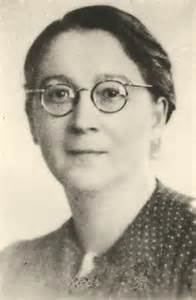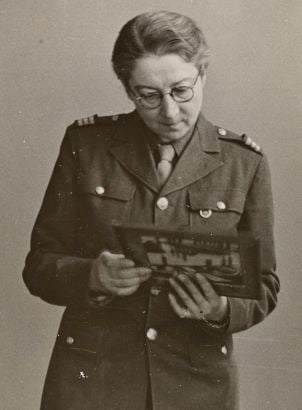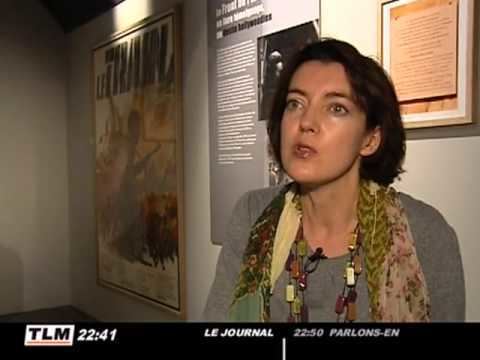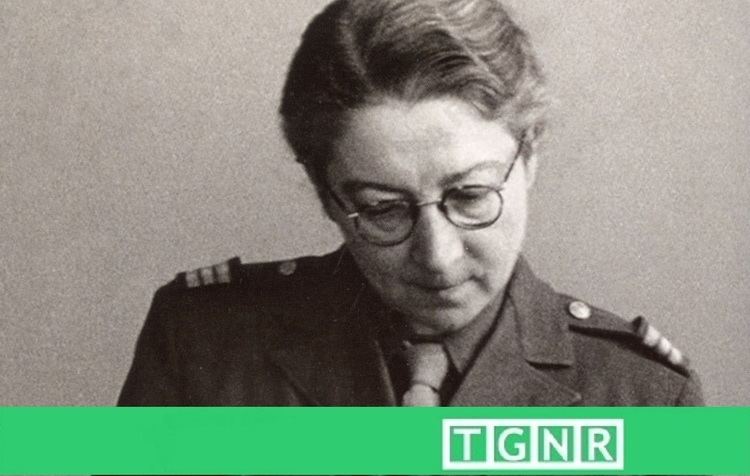Movies The Train Role Historian | Name Rose Valland Occupation Museum curator | |
 | ||
Full Name Rose Antonia Maria Valland Born 1 November 1898 ( 1898-11-01 ) Saint-Etienne-de-Saint-Geoirs, Isere Known for Commission for the Recovery of Works of Art Awards Legion d'honneur;Commandeur of the Order of Arts and Letters;Medaille de la Resistance;Officer's Cross of the Order of Merit;Medal of Freedom Education Ecole nationale superieure des Beaux-Arts Parents Rosa Maria Viardin, Francois Valland Similar People John Frankenheimer, Arthur Penn, Walter Bernstein, Nedrick Young | ||
L espionne aux tableaux rose valland face au pillage nazi extrait
Rose Antonia Maria Valland (1 November 1898 – 18 September 1980) was a French art historian, member of the French Resistance, captain in the French military, and one of the most decorated women in French history. She secretly recorded details of the Nazi plundering of National French and private Jewish-owned art from France; and, working with the French Resistance, she saved thousands of works of art.
Contents
- L espionne aux tableaux rose valland face au pillage nazi extrait
- The greatest heroine of world war ii monuments woman rose valland
- Early life
- World War II
- Post World War II
- In popular culture
- References

The greatest heroine of world war ii monuments woman rose valland
Early life

Valland was born in Saint-Étienne-de-Saint-Geoirs, Isère, the daughter of a blacksmith. Like many gifted pupils from humble backgrounds, she received a scholarship in an école normale, a teacher school. She graduated in 1918, with the plan of becoming an art teacher. She studied art at the École nationale des beaux-arts de Lyon, graduating in 1922. Valland then topped the competitive exam for art teacher training and underwent two years of training in the École nationale supérieure des beaux-arts in Paris, graduating 1925. Valland then became a drawing teacher in high schools, but began to study art history in the École du Louvre and the University of Paris. She graduated in 1931 with a special diploma from the École du Louvre, and engaged in graduate studies at the Collège de France. In 1932, Valland became volunteer assistant curator at the Jeu de Paume Museum.
World War II

In 1941, during World War II, Valland was put in paid service and became the overseer of the Jeu de Paume Museum at the time of the German occupation of France. Through the "Special Staff for Pictorial Art" (Sonderstab Bildende Kunst) of the Einsatzstab Reichsleiter Rosenberg für die besetzten Gebiete (The Reich Leader Rosenberg Institute for the Occupied Territories), or ERR, the Germans began the systematic looting of artworks from museums and private art collections throughout France. They used the Jeu de Paume Museum as their central storage and sorting depot pending distribution to various persons and places in Germany.

While the Nazi plundering was being carried out, Rose Valland began secretly recording as much as possible of the more than 20,000 pieces of art brought to the Jeu de Paume Museum. Valland kept secret from the Germans the fact that she understood German. In fact, she never formally studied this language, but some trips in Germany in the 1920s and 1930s had helped her to get a good grasp of a then widely used scholarly language. Valland regularly informed Jacques Jaujard, the Director of the Musėes Nationaux, about the status of Nazi art looting. In addition, for four years she kept track of where and to whom in Germany the artworks were shipped and risked her life to provide information to the French Resistance about railroad shipments of art so that they would not mistakenly blow up the trains loaded with France's priceless treasures. The museum was visited by high-ranking Nazi officials, and Valland was there when Reichsmarschall Hermann Göring came on 3 May 1941 to personally select some of the stolen paintings for his own private collection.

A few weeks before the Liberation of Paris, on 1 August 1944, Valland learned that the Germans were planning to ship out a last five boxcars full of art, including many of the modern paintings which they had hitherto neglected. She notified her contacts in the Resistance, who prevented The Train from leaving Paris. The train was subsequently liberated by the French Army.
Post World War II

Following the liberation of Paris by the Allied Forces, Rose Valland worked as a member of the "Commission for the Recovery of Works of Art" (Commission de Récupération Artistique). Valland was appointed a conservator of the French Musées Nationaux and in 1954 was named Chair of the "Commission for the Protection of Works of Art" (Chef du Service de protection des oeuvres d'art). In 1961, she wrote about her wartime experiences in a book published under the title, Le front de l'art (republished in 1997).
Rose Valland retired in 1968, but continued to work on restitution matters for the French archives. Her valor and dedication resulted in numerous awards from her own and other countries. From the French government she received the Légion d'honneur, was made a Commandeur of the Order of Arts and Letters and awarded the Médaille de la Résistance. Following its creation in 1951, she would receive the Officer's Cross of the Order of Merit of the Federal Republic of Germany. The United States awarded Valland the Medal of Freedom in 1948.
Valland died in 1980 and is buried in her hometown of Saint-Etienne-de-Saint-Geoirs. The Association de la Mémoire de Rose Valland is now based in her hometown in her memory.
In popular culture
The 1964 John Frankenheimer film The Train was loosely based on her book, and includes a character named "Mlle Villard". Valland's role in preserving the stolen art was discussed as part of the book and documentary, The Rape of Europa.
In 2006, Valland was the subject of Corinne Bouchoux's biography "Rose Valland: Resistance at the Museum."
Rose Valland is a character in the 2014 novel Portrait of a Woman in White, by Susan Winkler. The book tells the story of Nazi art looting in France and a French art-collecting family.
In Sara Houghteling's novel, Pictures at an Exhibition (2009), the character of Rose Clément is based on Rose Valland. In 2009 Valland was also one of the main subjects of Robert M. Edsel's book "The Monuments Men," which would later serve as the basis of the 2014 film of the same name.
Valland was an inspiration for the character of Claire Simone, portrayed by Cate Blanchett in the George Clooney-directed film The Monuments Men, released in February 2014.
She is also mentioned in the French thriller L'Antiquaire.
